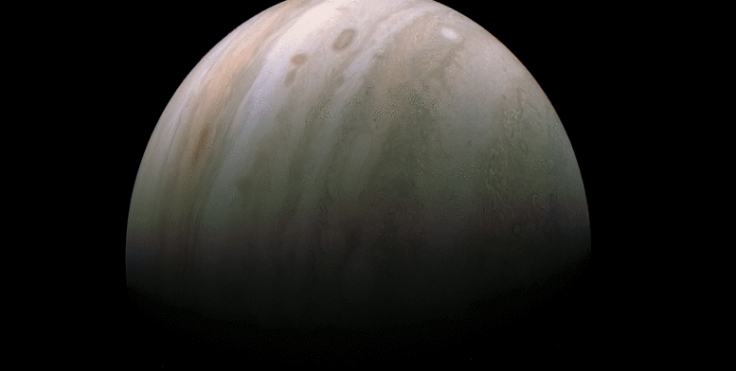The National Aeronautics and Space Administration (NASA) has released new footage of Jupiter taken by the Juno spacecraft.
Juno, which was launched in 2011 and reached Jupiter five years later, is the ninth and most recent spacecraft to study the planet
NASA Releases New Jupiter Footage

NASA has shared new footage of Jupiter made using raw images taken by the Juno spacecraft.
According to the statement released by NASA, the images were taken just as Juno completed its 41st close flyby of the planet. The flyby took place on April 9 and the spacecraft was 2,050 miles above the planet.
NASA has also credited citizen scientist Andrea Luck for creating the animated sequence, which you can watch here.
NASA statement also states that the Juno spacecraft was moving at a speed of 131,000 mph while snapping the raw images. Space points out in its report that it is "more than seven times faster than the speed of the International Space Station orbits Earth and about five times faster than the crewed Apollo missions were traveling as they left Earth for the moon."
Related Article: NASA's Juno Spacecraft Snaps New Photo of Jupiter, Its Two Moons
Jupiter: Fast Facts
Jupiter is probably best known as the biggest planet in the the solar system and fifth in line from the Sun.
According to NASA, it only takes this massive planet 10 Earth hours to complete a rotation. Hoever, it takes the planet 12 Earth years to complete an orbit around the Sun.
Its atmosphere is mostly made up of hydrogen and helium, and its famed Great Red Spot is actually a giant storm that is bigger than Earth in size. This enormous storm has been raging for more than a century already.
Jupiter has more than 75 moons and, believe it or not, a faint ring system.
Juno Spacecraft
NASA states on its website that a total of nine spacecraft have visited the solar system's largest planet as of press time. Seven of these spacecraft have simply flown by, while two have managed to orbit the planet.
The most recent spacecraft to do so is none other than Juno, which was launched in August 2011. It did not arrive in Jupiter until five years later after traveling 1.7 billion miles.
"Its mission: to probe beneath the planet's dense clouds and answer questions about the origin and evolution of Jupiter, our solar system, and giant planets in general across the cosmos," according to NASA.
The Space report notes that last year, the space agency authorized an extended mission for the Juno spacecraft, allowing it to look at four of Jupiter's more than 75 moons. These are Callisto, Europa, Io, and Ganymede. These four are also known as the Galilean moons since they were discovered by Italian astronomer Galileo Galilei.
The extended mission of the Juno spacecraft will run until September 2025 should it remain in good health. The Space report points out that radiation will be the main threat to the spacecraft.









